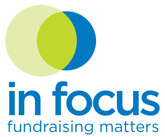Recent Posts
- Navigating 2024’s Unique Year-End Fundraising Landscape
- Latest Giving USA Data
- How to Flex Your Case for Support to Raise More Money
- Maximizing Potential of Donor-Advised Funds: Strategies You Need To Know
- Major Donors: Cultivating Relationships & Forging Strong Ties
- On Assignment in an Interim Development Role
- Planning with Intention
- Using Metrics to Understand Your Email Impact (Part 2)
Who’s On Board?
By: Nadine Gabai-Botero, CFRE, President
Updated: June 14, 2023
Originally Published: June 13, 2022
Recently, I’ve been thinking a lot about nonprofit boards of directors and, specifically, why some are effective, and others seem to be stuck in perpetual states of dysfunction.
Much of what I see when I examine an organization's volunteer leadership often comes back to a mismatch between what the nonprofit needs, what they think they need (and what they tell prospective board members they need as they recruit them), and who is actually sitting on the board.
I’m a self-proclaimed nonprofit geek and love reading about and discussing all aspects of running an NGO. As I was thinking about what is wrong with boards that can’t get it right, I decided to focus on a few development-related board challenges here. In other posts, I’ll gladly dive in around other pervasive issues, such as board micro-management, fiscal obliviousness, and (one of my biggest peeves) poorly vetted board members. For now, I’ll detail a few areas that can lead to dysfunction and a lack of board cohesion. Can you relate to any of them?
Give or Get or What?
Many nonprofits hesitate to draw a line indicating how much board members should donate or secure in order to join as volunteer leaders. Often, they don’t want to alienate potential board members by identifying a dollar amount as it could be a bar to entry, particularly when seeking to diversify the board (including adding younger members as well as those from the BIPOC community).
While these are all valid issues to address, challenges often arise when boards decide to do nothing (i.e. require no gift amount or have no donation discussion during onboarding) or when prospective board members aren’t informed that they will be solicited for a donation before during the vetting process.
While I prefer a Flexible Give or Get Policy (essentially, you must give an amount that’s meaningful to you and/or help get funding that will be helpful to the organization), it is vital to have a clear policy that is shared with all members. It’s also important to set a structured timeline to ask board members to complete a pledge form indicating how much and when they’ll give. These pledge forms should be shared with members at the first board meeting of the fiscal year, with a clear deadline for returning the completed form and follow-up planned if needed.
Often, dysfunction arises when individual board members decide the nonprofit is doing well enough and don’t need their contribution or when some members learn that a few board members haven’t given and some ask themselves, “Why am I giving if these other folks aren’t?” Once you have a few members decide they don’t need to give, the cascading effect can grow and dissension with it.
While the Director of Development or CEO can play a part in following up with board members once they’ve made a pledge, the board chair or development committee chair should be the one to engage board members initially to secure their gift. If you are a senior development staff member or CEO and your board is looking to you to make the ask - please push back! That isn’t your role, and given the power dynamic inherent in the board/staff relationship, you may not end up with the result you’re looking for.
What’s the Board’s Role in Fundraising?
When I interview board members for an assessment or talk to members during a training session, they sometimes tell me they “don’t do fundraising.” Often, with that statement, that board member thinks they’re off the hook and, in fact, they shouldn’t be asked to do any activity related to one of the most critical functions in running an effective nonprofit.
That’s just not right. And it sets up an imbalance that can impact the board’s ability to be a strong fundraising partner with staff.
While I understand that some individuals just don’t want to solicit gifts -- especially without any experience or preparation -- there are many other ways that board members can be involved with fundraising that doesn’t involve asking for a donation. From thanking a donor for their donation to helping to identify potential funders, inviting friends or colleagues to an event or hosting a gathering, there are many ways that board members can be a part of fundraising by championing the mission and elevating the organization’s work.
So, what can you do if your board is leaning into dysfunction and isn’t a partner in raising funds or visibility?
- First, get your board chair on board. If you can get the chair to understand the challenge, you’ll have a much easier time shifting the board culture. If the board chair is not a fan of fundraising and doesn’t see a problem with the way things are, make sure there are term limits in place and start working on educating the chair-elect! While this kind of adjustment is not impossible if you don’t have the chair leading the way, it is far easier if s/he is with you.
- Next, start working on better-defining fundraising expectations for the board and highlighting why it’s important. Make sure to share the different ways that board members can help with development efforts and plan one-on-one calls with each board member to talk about how they can help.
- Finally, stay focused on the board recruitment effort. Emphasize the board’s role in fundraising if you’re in initial vetting meetings, and if you’re not, work on adding development-related talking points to information that’s being shared in initial conversations.
Like all changes, this shift will take time. But moving in this direction is critical.

